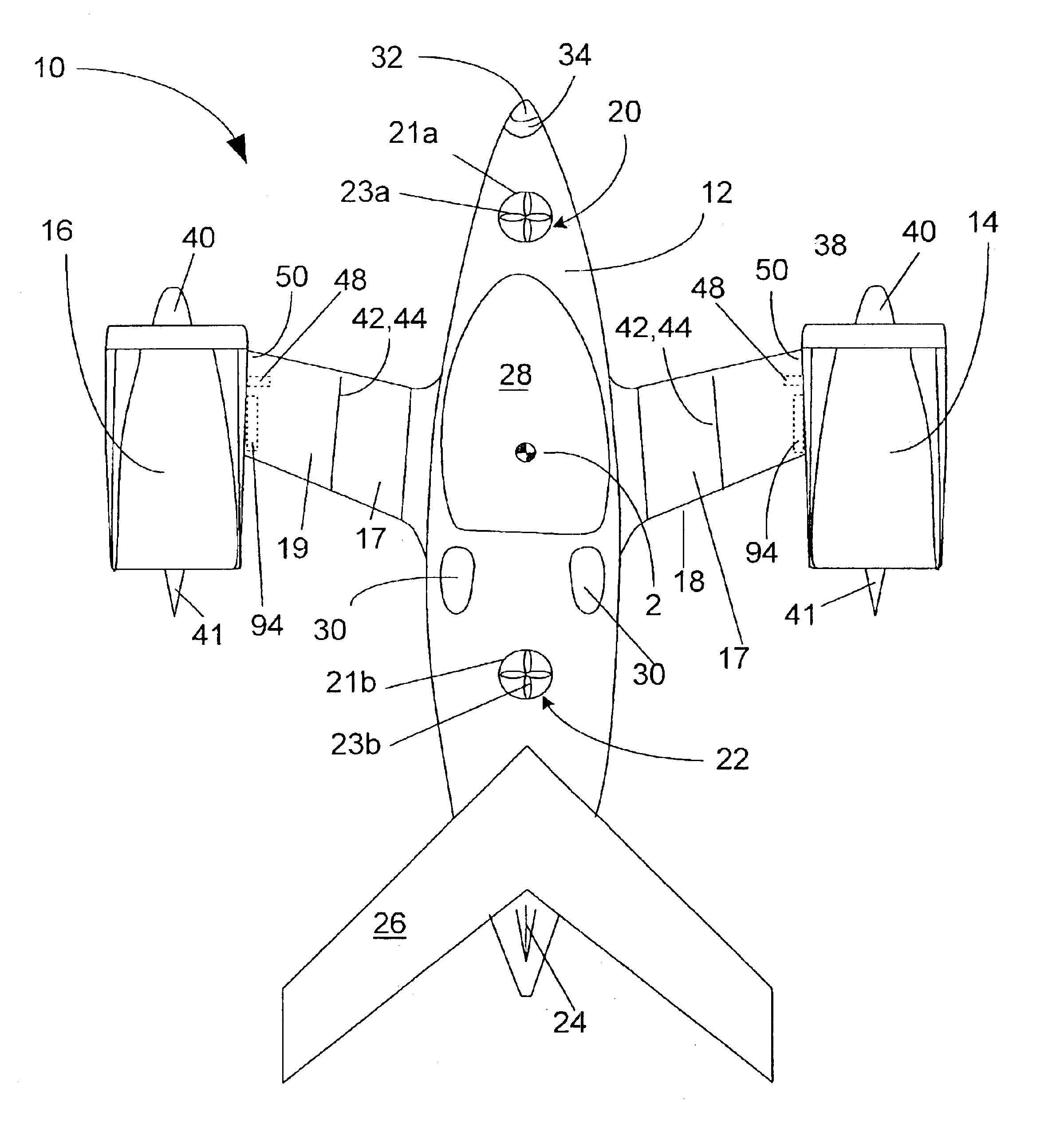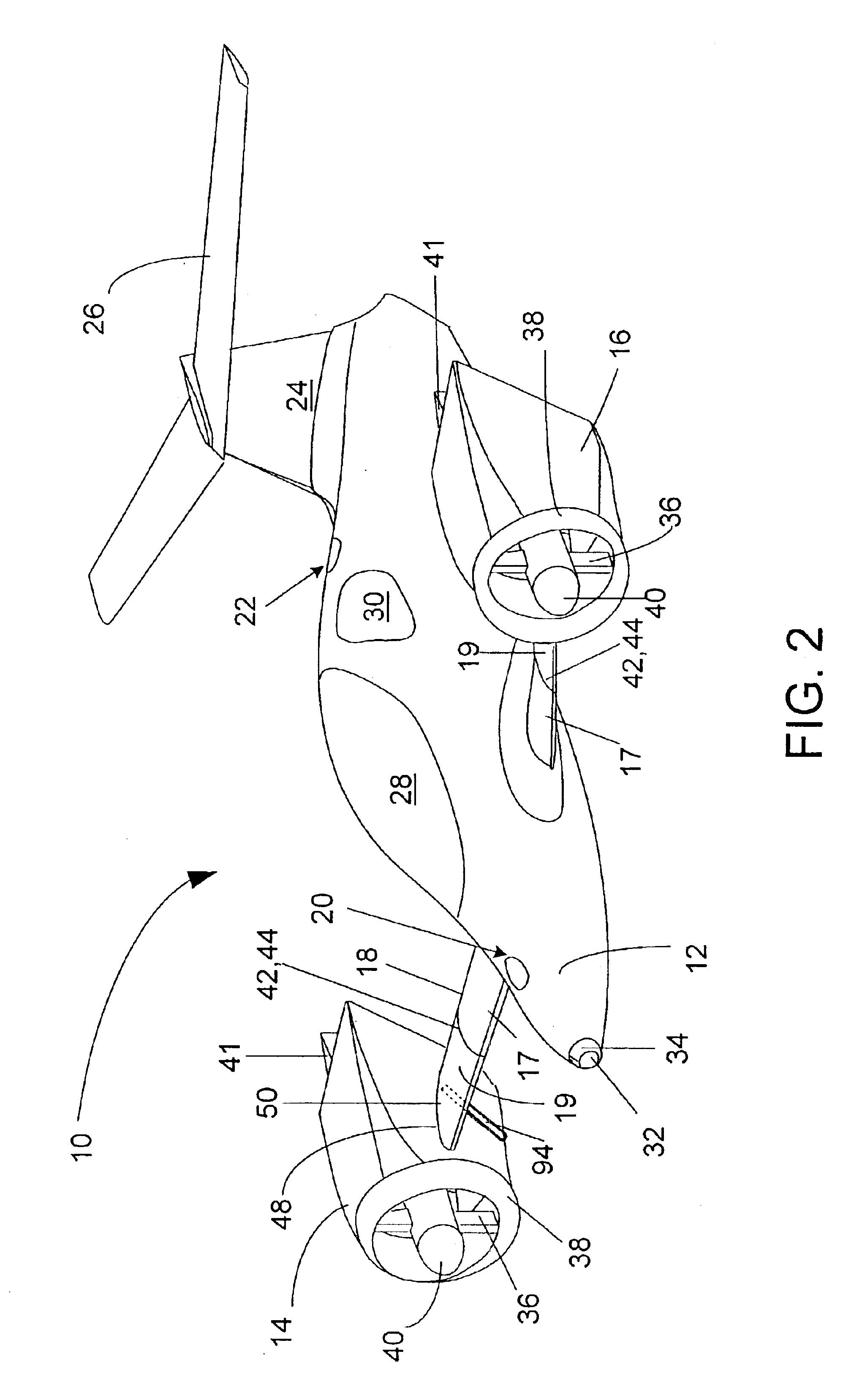Vertical take-off and landing vehicles
a technology of vertical landing and landing vehicle, which is applied in the direction of efficient propulsion technology, vertical landing/take-off aircraft, aircraft navigation control, etc., can solve the problems of engine producing extra thrust, wing generating negative lift, and aircraft control causing problems
- Summary
- Abstract
- Description
- Claims
- Application Information
AI Technical Summary
Problems solved by technology
Method used
Image
Examples
embodiment 100
An alternate embodiment 100 is shown in FIGS. 16-19. As illustrated in FIG. 16, the alternate embodiment has most of the components of the first embodiment; a fuselage 112, a pair of wings 118 foldable at break lines 119, a vertical stabilizer 124, a horizontal stabilizer 126, a transparent canopy 128, two passenger windows 130, and a first pair of nacelles 114 and 116 rotatively attached to the wingtips 150 and rotatable by linear actuators 152. However in this embodiment, embodiment 100, two additional nacelles 115 and 117 are also rotatively attached to the fuselage 112 by short wings 155 and are rotatable by additional pair of linear actuators (not shown).
In this embodiment, the wings 118 and the rear nacelles 114 and 116 have been moved further towards the rear of the fuselage 112 as compared to the first embodiment, and the forward pair of nacelles are attached to fuselage 112 forward of the canopy 128. All four nacelles 114-117 can rotate to approximately 45 degrees from the ...
PUM
 Login to View More
Login to View More Abstract
Description
Claims
Application Information
 Login to View More
Login to View More - R&D
- Intellectual Property
- Life Sciences
- Materials
- Tech Scout
- Unparalleled Data Quality
- Higher Quality Content
- 60% Fewer Hallucinations
Browse by: Latest US Patents, China's latest patents, Technical Efficacy Thesaurus, Application Domain, Technology Topic, Popular Technical Reports.
© 2025 PatSnap. All rights reserved.Legal|Privacy policy|Modern Slavery Act Transparency Statement|Sitemap|About US| Contact US: help@patsnap.com



